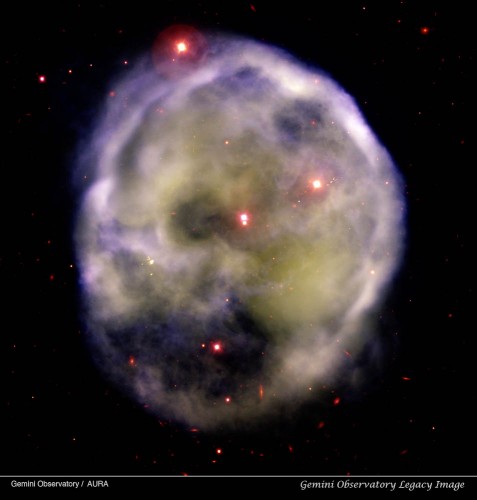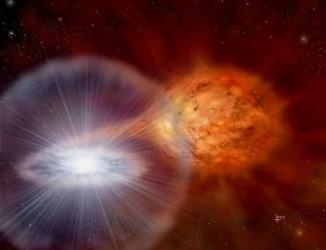- Date: 3 Jun 2015
- Comments: (0)
- Categories: Español, Operations News, Science Results

Gemini South Image of the planetary nebula NGC 246 located about 1,600 light-years away in the constellation of Cetus. /// Imagen de la nebulosa planetaria NGC 246 ubicada a unos 1.600 años luz de distancia en la constelación de Cetus.
The Korea Astronomy and Space Science Institute (KASI) is supporting a three-year research program led by Hee-Won Lee (Sejong University) and Rodolfo Angeloni (Gemini Observatory) to study the late stages of stellar evolution. In addition to advancing the fundamental understanding of these systems, the program will help train the next generation of astronomers and enhance collaborations among Korea, Gemini, and Chile.
The research program includes the study of white dwarfs (low-mass stars in their final stages of life) within young planetary nebulae and symbiotic stars, the latter being interacting binary systems where a white dwarf is accreting matter from a cool giant star.
In the framework of this collaboration, Korean and Chilean students will visit Gemini-South to work on-site at Gemini. Two international conferences – one in Chile and one in Korea – is also planned over the next few years in order to share and promote future investigations.
Colaboración Gemini- Corea Estudia las Etapas Finales de la Evolución Estelar
El Instituto de Astronomía y Ciencias del Espacio de Corea (KASI) actualmente apoya un programa de investigación de tres años dirigido por Hee-Won Lee (Universidad de Sejong) y Rodolfo Angeloni (Observatorio Gemini) para estudiar las últimas etapas de la evolución estelar. Además de avanzar en la comprensión fundamental de estos sistemas, el programa ayudará a entrenar a la próxima generación de astrónomos y mejorar la colaboración entre Corea, Gemini, y Chile.
El programa de investigación incluye el estudio de enanas blancas (estrellas de baja masa en etapas finales de su vida) al interior de nebulosas planetarias jóvenes y estrellas simbióticas. Éstas últimas consisten en sistemas binarios que interactúan donde una enana blanca está en proceso de acreción desde una estrella gigante fría.
En el marco de esta colaboración, estudiantes coreanos y chilenos visitarán Gemini Sur para trabajar in-situ en el proyecto. Además, se organizarán dos conferencias internacionales -una en Chile y otra en Corea- durante los dos años siguientes para compartir y promover los resultados de las investigaciones.






